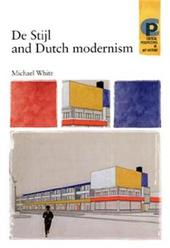
|
De Stijl and Dutch Modernism
Paperback / softback
Main Details
| Title |
De Stijl and Dutch Modernism
|
| Authors and Contributors |
By (author) Michael White
|
| Series | Critical Perspectives in Art History |
|---|
| Physical Properties |
| Format:Paperback / softback | | Pages:196 | | Dimensions(mm): Height 240,Width 170 |
|
| Category/Genre | Art and design styles - Modernist design and Bauhaus
Theory of architecture |
|---|
| ISBN/Barcode |
9780719061622
|
| Classifications | Dewey:709.492 |
|---|
| Audience | | Tertiary Education (US: College) | | Professional & Vocational | |
|---|
| Illustrations |
Illustrations, black & white|Illustrations, colour
|
|
Publishing Details |
| Publisher |
Manchester University Press
|
| Imprint |
Manchester University Press
|
| Publication Date |
10 July 2003 |
| Publication Country |
United Kingdom
|
Description
The name De Stijl, the title of a magazine founded in the Netherlands in 1917, is now used to identify the abstract art and functional architecture of its major contributors: Mondrian, Van Doesburg, Van der Leck, Oud, Wils and Rietveld. De Stijl achieved international acclaim by the end of the 1920s and its paintings, buildings and furniture made fundamental contributions to the modern movement. This study emphasizes the local context of De Stijl and explores its relationship to the distinctive character of Dutch modernism. It examines how the debates concerning abstraction in painting and spatiality in architecture were intimately connected to contemporary developments in the fields of urban planning, advertising, interior design and exhibition design. The book describes the interaction between the world of mass culture and the fine arts. "De Stijl and Dutch Modernism" aims to be an important addition to research on the interwar avant-garde and be of use to students and specialists in the field.
Author Biography
Michael White is Lecturer in History of Art at the University of York -- .
Reviews"This stimulating and original book represents a significant contribution to the scholarship on De Stijl. In elucidating theoretical complexities of the different positions adopted by the various artists and architects, Dr. White overturns many dearly and long held assumptions about the movement and throws new light on its history."--Martin Hammer, University of Edinburgh
|